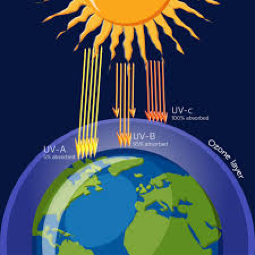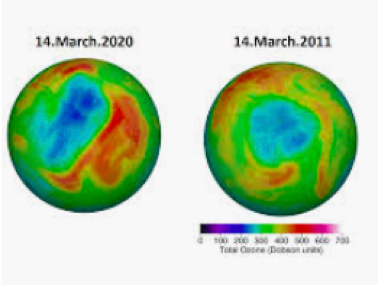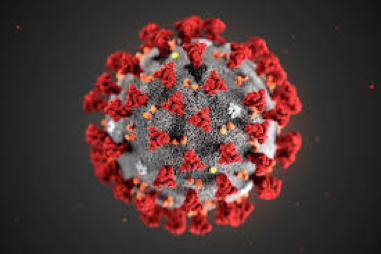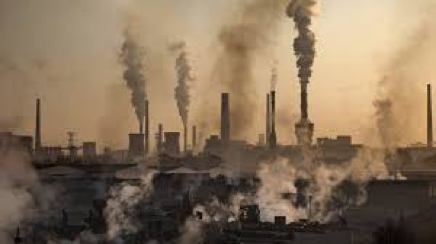How did the largest-ever Arctic ozone hole just close?

Just as suddenly as it first formed, a record-breaking ozone hole has healed. The largest ozone hole to ever open up over the Arctic is now closed.
The Ozone Layer
Life on Earth relies on the ozone layer, which lies in the stratosphere between 10 and 50 km above the Earth, to protect us from ultraviolet radiation, which is known to cause skin cancer and suppress the immune system.It contains high concentration of ozone(O3) in relation to other parts of the atmosphere.

But human-made chemicals have been poking holes in it for years —
Among them are chlorofluorocarbons (CFCs), formerly found in aerosols, refrigerators, air conditioners, foam food packaging, and fire extinguishers,manufactured chemicals that have been phased out of consumer products after they were banned in 1996, and halons, which accumulate in the atmosphere after they’re emitted during human activity. These react with ultraviolet rays from the sun to release chlorine and bromine atoms, which in turn react with Ozone(O3) and deplete the layer.
These chemicals can remain the atmosphere for around 50 years, because of their longevity, the ozone layer isn’t expected to fully heal until the end of the 21st century, according to the Environmental Protection Agency.
Creation of the Arctic ozone hole

A curious confluence of atmospheric events had produced the largest ozone hole ever measured over the arctic. A powerful polar vortex had trapped frigid air in the atmosphere above the North Pole, allowing high-altitude clouds to form in the stratosphere.Within those clouds, CFCs and hydro-chlorofluorocarbons were present which deplete the ozone layer as discussed above.
Unrelated to COVID19

Despite coronavirus lockdowns resulting in a significant reduction in air pollution, scientists say the occurrence of the hole healing was completely unrelated to COVID19. The Copernicus Atmosphere Monitoring Service(CAMS) also announced that the phenomenon probably had nothing to do with the pandemic.
“Actually, COVID19 and the associated lockdowns probably had nothing to do with this,” CAMS tweeted. “It’s been driven by an unusually strong and long-lived polar vortex, and isn’t related to air quality changes.”
Separate from Antarctica ozone hole

The discovery of a large ozone hole above Antarctica in 1985 led to the approval of the Montreal Protocol two years later.In 2019, it reached its smallest extent in about 30 years.
Ozone holes are more common over the Antarctic every year, according to CAMS, but “the conditions needed for such strong ozone depletion are not normally found in the Northern Hemisphere.”
The Arctic stratosphere is usually less isolated than its Antarctic counterpart because the presence of nearby land masses and mountain ranges disturbs the weather patterns more than in the Southern Hemisphere, CAMS reports.
The much larger Antarctic ozone hole will remain a seasonal feature, as it has for roughly four decades, though that hole has begun shrinking in size.The shrinking of the southern ozone hole is thanks largely to a global ban on ozone-depleting chemicals initiated in 1987, though some key nations still do not appear to be participating.

According to a report, factories in China as of 2019 still appeared to be pumping large quantities of ozone-depleting chemicals into the atmosphere.
We must continue to preserve the ozone layer as it acts as a shield against the harmful ultra violet rays of the sun thereby supporting the lives of millions of species.
